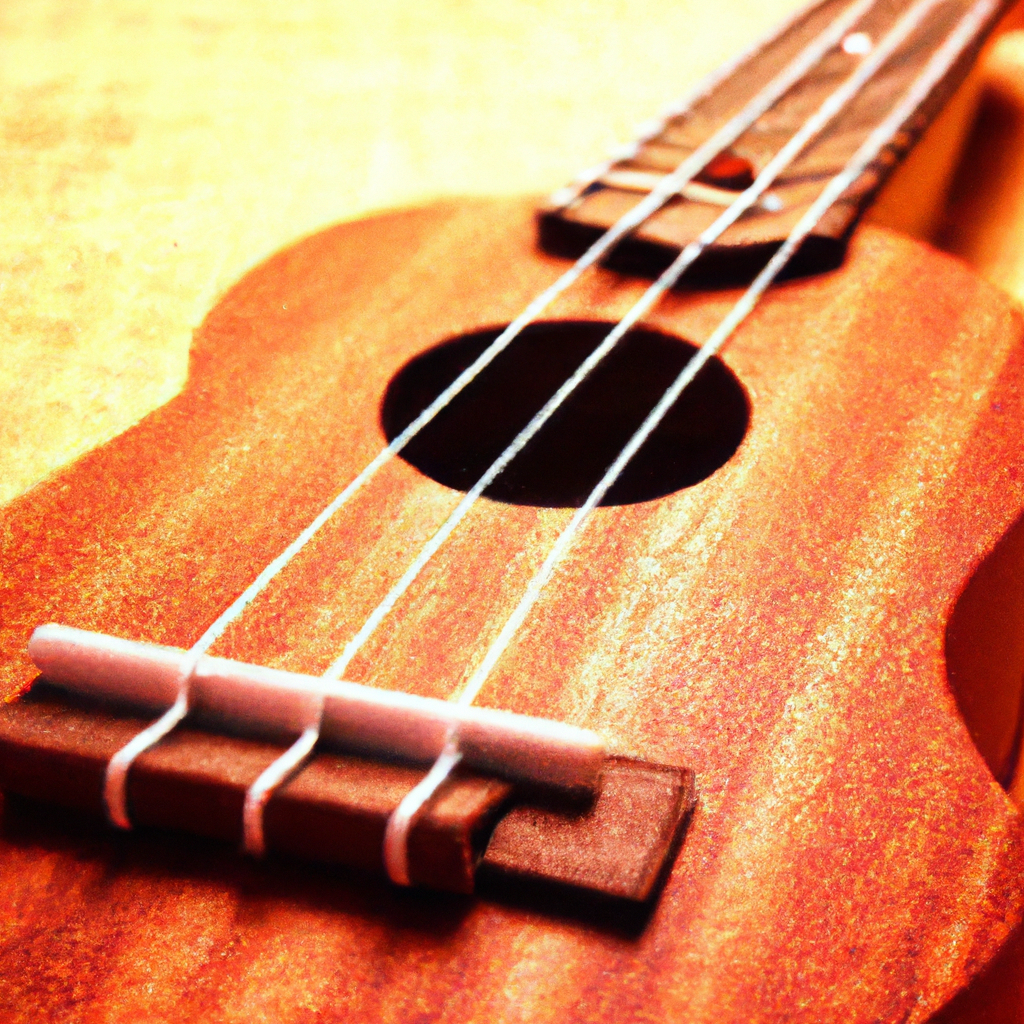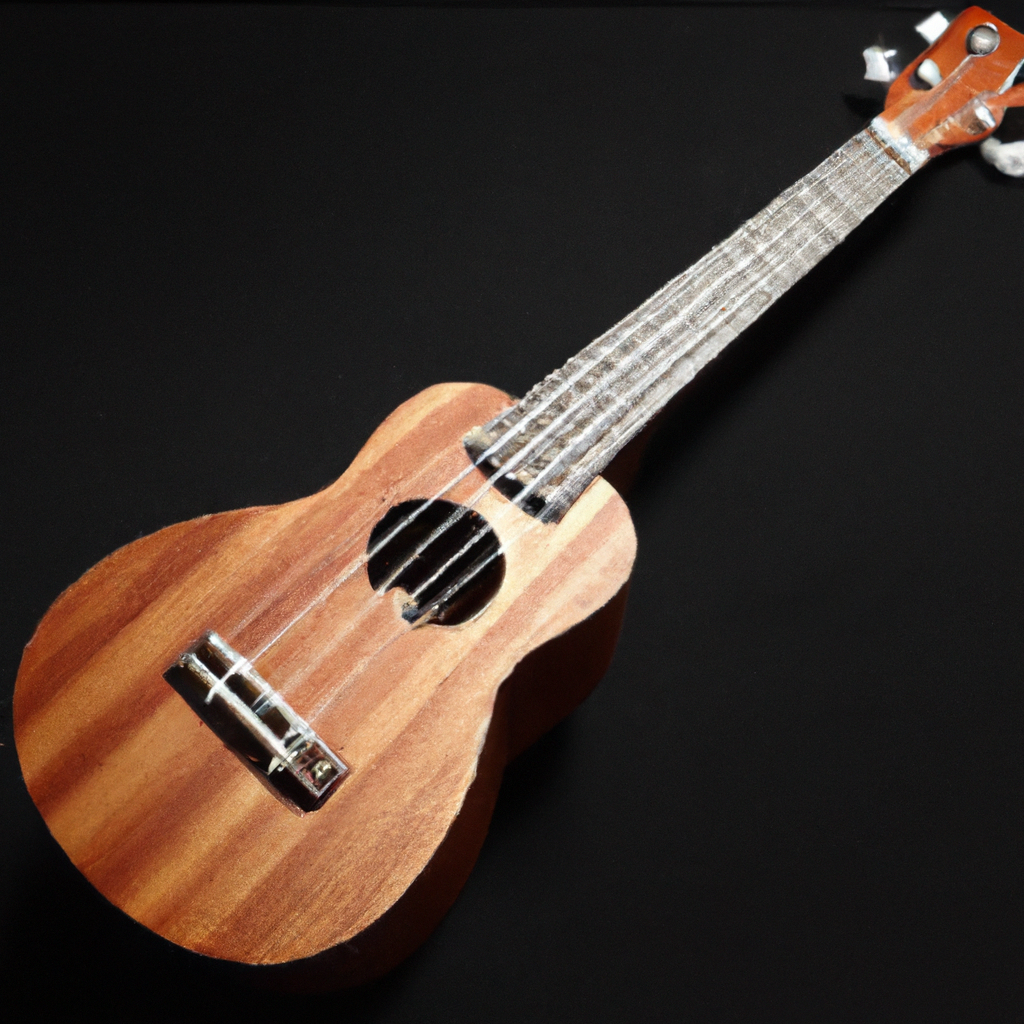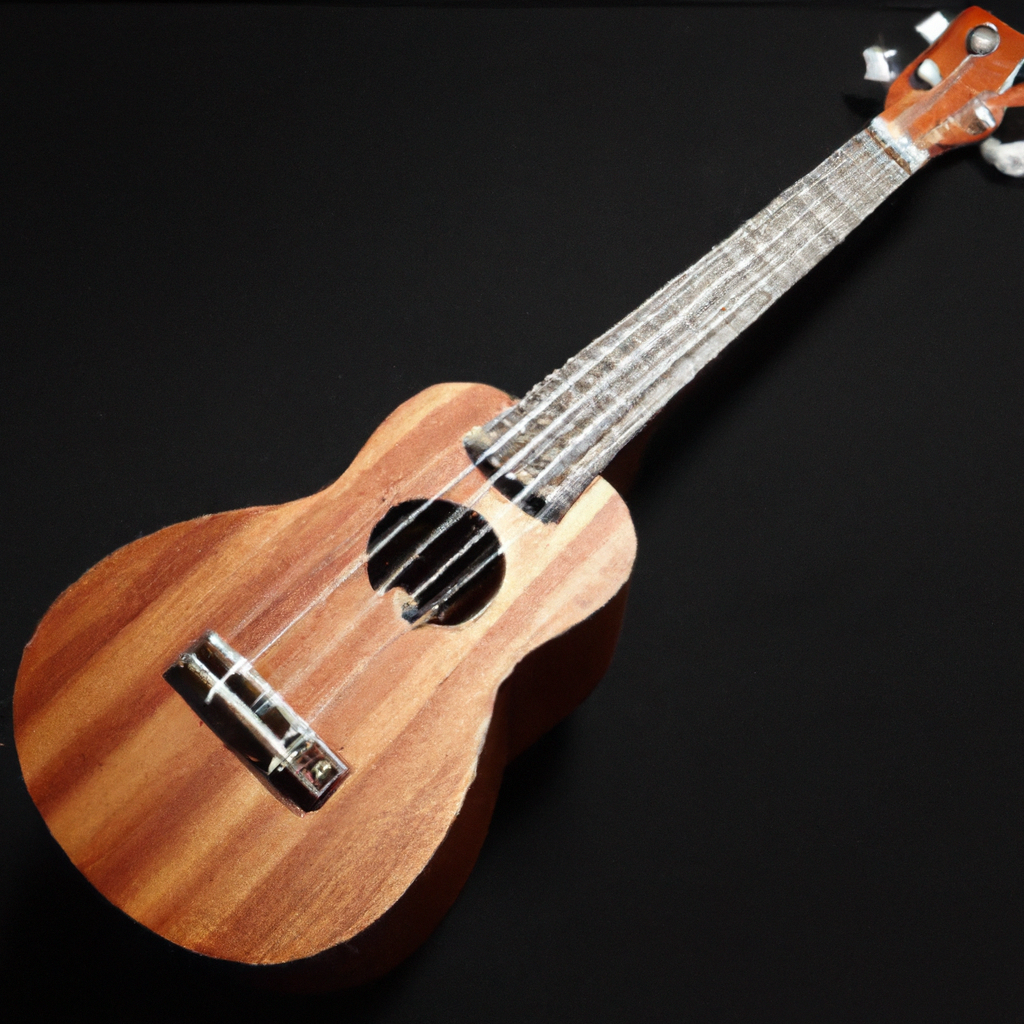Have you ever wondered about the enchanting melodies and soothing rhythms that have come to define Hawaiian music? Well, look no further! In this article, we will embark on a fascinating journey delving into the profound influence of the ukulele on Hawaiian music. From its humble origins as a Portuguese instrument to its pivotal role in shaping the unique sound of Hawaiian melodies, we will explore the rich history and undeniable charm of the ukulele. So sit back, relax, and prepare to be serenaded by the sweet sound of the ukulele as we uncover the captivating story behind its role in Hawaiian music.

History and Origins of the Ukulele
Introduction to the ukulele
The ukulele is a small stringed instrument that is widely associated with Hawaiian music. It is known for its distinctive sound and portability, making it a favorite among musicians and enthusiasts alike. The ukulele is typically made of wood and consists of four strings that are plucked or strummed to produce melodic notes. Despite its small size, the ukulele has had a significant impact on Hawaiian music and cultural identity.
Origin of the ukulele in Hawaii
The ukulele’s journey to Hawaii can be traced back to the 19th century when Portuguese immigrants arrived on the islands to work in the sugarcane and pineapple plantations. These immigrants brought with them a small string instrument called the machete, which is the predecessor of the modern ukulele. As the Portuguese settled in Hawaii, they introduced their musical traditions, including the melodic and rhythmic elements of the machete.
Influence of Portuguese immigrants
The Portuguese immigrants played a crucial role in the development and popularization of the ukulele in Hawaii. As they adapted the machete to fit their new surroundings, the instrument underwent some modifications, including a smaller and lighter body and a change in the number of strings. These changes eventually led to the creation of the ukulele as it is known today. The instrument’s popularity quickly spread among the locals, and Hawaiian musicians embraced the ukulele’s unique sound and versatility.
Traditional Hawaiian Music
Characteristics of traditional Hawaiian music
Traditional Hawaiian music is deeply rooted in the cultural heritage of the Native Hawaiian people. Its characteristic features include soothing melodies, smooth vocal harmonies, and the use of nature-inspired themes in the lyrics. The music often reflects the close connection between Hawaiians and their environment, expressing sentiments of love, happiness, and a sense of place. Traditional Hawaiian music is known for its gentle and relaxed sound, which creates a calming and peaceful atmosphere.
Instruments used in traditional Hawaiian music
Traditional Hawaiian music relies on a variety of instruments to create its distinct sound. Alongside the ukulele, some of the most prominent instruments include the slack-key guitar, which features open tunings that produce rich and resonant tones, and the steel guitar, which is played using a steel bar or slide to create smooth gliding notes. Other instruments include the ipu (a gourd drum), pahu (a drum made from a coconut shell), and the pahu hula (a hula drum). The combination of these instruments contributes to the unique sound of traditional Hawaiian music.
Role of the ukulele in traditional Hawaiian music
The ukulele has played a central role in traditional Hawaiian music since its introduction to the islands. It has become an iconic symbol of Hawaiian culture and music, often accompanying the melodic vocals and harmonies. The ukulele’s soft and sweet tones blend harmoniously with the other instruments, adding depth and texture to the music. Its versatility allows it to be used in a variety of musical styles, from lively and upbeat compositions to introspective and emotional ballads. The ukulele has become an integral part of the traditional Hawaiian music ensemble, preserving the rich legacy of the islands’ musical heritage.
Influential Ukulele Players
Early ukulele players in Hawaii
In the early days of the ukulele’s popularity, several influential players emerged in Hawaii, contributing to the instrument’s development and recognition. Notable figures such as Ernest Kaai, who is regarded as one of the finest ukulele players of the time, helped establish the ukulele as a respected musical instrument. Their technical skills and innovative playing techniques paved the way for future generations of ukulele players in Hawaii and beyond.
Prominent Hawaiian musicians and their approach to the ukulele
Hawaii has produced a wealth of talented musicians who have elevated the ukulele to new heights. Prominent artists such as Israel Kamakawiwo’ole, Jake Shimabukuro, and Ledward Kaapana have garnered international acclaim for their masterful ukulele playing. Each musician brings their unique style and approach to the instrument, showcasing the ukulele’s versatility and adaptability to different genres. Their contributions have expanded the boundaries of what can be achieved with the ukulele and have inspired countless musicians around the world.
Impact of popular music on ukulele playing style
The popularity of the ukulele skyrocketed in the early 20th century through the rising influence of popular music. As the ukulele gained recognition in mainstream culture, it found its way into a wide range of musical genres, such as jazz, blues, and pop. Iconic musicians like Arthur Godfrey and Tiny Tim helped popularize the ukulele through their performances and recordings. Their success exposed the instrument to a broader audience and contributed to its enduring popularity.
Evolution of Hawaiian Music
Introduction of the ukulele to the mainland United States
The ukulele’s introduction to the mainland United States can be attributed to the Panama-Pacific International Exposition held in San Francisco in 1915. Hawaiian musicians and performers showcased their unique musical talents, captivating audiences with the sounds of the ukulele. The instrument quickly caught the attention of mainland musicians and enthusiasts, sparking a nationwide fascination with Hawaiian music and culture.
Hawaiian music in the early 20th century
In the early 20th century, Hawaiian music experienced a surge in popularity on the mainland. The gentle and exotic melodies of the ukulele, combined with the soothing voices of Hawaiian singers, resonated with audiences across America. The music became synonymous with relaxation and escape, transporting listeners to the idyllic shores of the Hawaiian Islands. The ukulele became a symbol of a carefree and laid-back lifestyle, capturing the imagination of the American public.
Development of new genres influenced by the ukulele
The widespread popularity of Hawaiian music in the mainland United States led to the emergence of new musical genres inspired by the ukulele’s unique sound. Artists began incorporating elements of Hawaiian music into their compositions, giving rise to the genre known as “Hapa Haole,” which blended traditional Hawaiian melodies with English lyrics. The ukulele’s influence can also be heard in the birth of exotica and Tiki culture, where its distinct timbre adds an authentic touch to the tropical-themed music.

International Popularity of the Ukulele
Spread of the ukulele to the mainland United States
As the ukulele gained popularity on the mainland, its influence continued to grow internationally. The instrument found its way to Europe, Asia, and other parts of the world, captivating audiences with its charming sound. The ukulele’s portability and affordability made it accessible to musicians of all ages and skill levels, further contributing to its global appeal.
Ukulele’s role in popular music in the 20th century
Throughout the 20th century, the ukulele became ingrained in popular music across the globe. From the roaring twenties with its jazz-influenced ukulele bands to the catchy tunes of the 1950s and 1960s, the ukulele added a distinctive flavor to mainstream music. Iconic songs like “Somewhere Over the Rainbow” performed by Israel Kamakawiwo’ole and “I’m Yours” by Jason Mraz showcased the ukulele’s ability to captivate audiences and leave a lasting impression.
Revival of ukulele popularity in the 21st century
The ukulele experienced a resurgence in popularity in the 21st century, propelled by social media platforms and online communities. Aspiring musicians and enthusiasts began sharing their ukulele performances and tutorials, creating a global ukulele community. The instrument’s cheerful sound, ease of learning, and its association with happiness and positivity resonated with people worldwide, making the ukulele a beloved instrument for individuals of all ages and musical backgrounds.
Contemporary Hawaiian Music
Characteristics of contemporary Hawaiian music
Contemporary Hawaiian music has evolved over time, blending traditional elements with modern influences. It embraces a wide range of styles, including contemporary pop, reggae, folk, and even rock. The lyrics often touch upon themes of cultural identity, love for the land, and the complexities of modern life. While contemporary Hawaiian music continues to celebrate the ukulele, it also incorporates other instruments and musical arrangements to create a dynamic and diverse sound.
Incorporation of different musical styles into Hawaiian music
Contemporary Hawaiian music reflects the multicultural nature of Hawaii and its people. Artists draw inspiration from various musical traditions, incorporating elements of jazz, R&B, and world music into their compositions. This fusion of styles showcases the versatility of the ukulele and highlights its ability to adapt and thrive in different musical landscapes.
Continued importance of the ukulele in contemporary Hawaiian music
Despite the evolution of Hawaiian music, the ukulele remains a vital component of contemporary compositions. Its distinct timbre and melodic qualities provide a familiar and comforting sound that connects listeners to the rich musical heritage of Hawaii. The ukulele’s popularity continues to inspire a new generation of musicians and contributes to the ongoing development of contemporary Hawaiian music.
Impact of the Ukulele on Cultural Identity
Symbolic significance of the ukulele in Hawaiian culture
The ukulele holds immense symbolic significance in Hawaiian culture. It is regarded as a cultural icon, representing the spirit of aloha (love, compassion, and respect) and the laid-back lifestyle associated with the Hawaiian Islands. The ukulele serves as a means of connecting with one’s ancestry, preserving traditional Hawaiian music, and fostering a sense of community among musicians and enthusiasts.
Ukulele festivals and events
In celebration of the ukulele’s cultural significance, Hawaii hosts numerous festivals and events dedicated to the instrument. These gatherings bring together ukulele players from around the world to share their love for the instrument, participate in workshops, and showcase their talents. Festivals such as the Ukulele Festival Hawaii and the Waikiki Steel Guitar Week highlight the ukulele’s impact on Hawaiian music and culture, cultivating appreciation and fostering unity among musicians and audiences alike.
Preservation of Hawaiian musical traditions through the ukulele
The ukulele plays a crucial role in preserving and promoting Hawaiian musical traditions. It serves as a vehicle for passing down the songs, melodies, and techniques that have been cherished for generations. Through formal music education programs, community workshops, and individual practice, the ukulele ensures the continued vitality of Hawaiian music, empowering future generations to connect with their heritage and keep the traditions alive.
Education and Ukulele
Role of the ukulele in music education in Hawaii
The ukulele holds a significant place in music education in Hawaii. It serves as an entry point for students to explore their musical abilities, offering a gateway to understanding and appreciating different musical styles. Schools across the islands incorporate the ukulele into their music programs, providing students with the opportunity to learn about Hawaiian music and culture while developing their musical skills and creativity.
Ukulele as a beginner-friendly instrument
The ukulele’s accessibility and gentle learning curve make it an ideal instrument for beginners. Its smaller size, fewer strings, and simple chord formations allow novice players to quickly grasp the fundamentals. The ukulele’s forgiving nature encourages beginners to experiment and build their repertoire, fostering their passion for music and paving the way for further musical exploration.
Ukulele’s influence on music programs and curriculum
The ukulele’s popularity has influenced music programs and curriculum beyond Hawaii. Schools and educators worldwide recognize the instrument’s appeal and educational value, incorporating it into their music classes and workshops. The ukulele’s versatility and ease of play incentivize an inclusive approach to music education, providing a platform for students of diverse backgrounds and abilities to engage with music and develop their artistic expression.
Technical Advancements and Innovation
Development of different ukulele sizes and styles
Over time, the ukulele has evolved in terms of sizes and styles. While the soprano and concert ukuleles are the most commonly seen, there are also tenor and baritone variations that offer different tonal qualities and playing experiences. Additionally, innovators have pushed the boundaries of ukulele design, experimenting with materials, shapes, and amplification techniques. These advancements have expanded the range of possibilities for players and allowed for greater creative expression.
Improvements in ukulele construction and materials
Modern advancements in ukulele construction have resulted in instruments with enhanced playability and improved sound quality. Innovations in bracing, nut and saddle materials, and finish technologies have contributed to the overall performance and durability of the ukulele. Players can now choose from a wide variety of high-quality instruments that suit their preferences, whether it be for traditional Hawaiian music or contemporary genres.
Contemporary applications and experimentation with the ukulele
The ukulele’s enduring appeal has inspired musicians to explore new and unconventional ways of using the instrument. Artists have incorporated the ukulele into diverse musical genres, experimenting with effects pedals, loop stations, and alternative playing techniques. These innovations have expanded the sonic possibilities of the ukulele, demonstrating its versatility as a contemporary instrument capable of pushing musical boundaries.
Conclusion
Summary of the ukulele’s influence on Hawaiian music
The ukulele has played a transformative role within Hawaiian music, originating from its introduction to the islands by Portuguese immigrants. It has become an integral part of traditional Hawaiian music, helping to create its gentle and soothing soundscape. The instrument’s popularity has spread worldwide, influencing various musical genres and captivating audiences with its unique charm. The ukulele continues to thrive in contemporary Hawaiian music, enriching cultural identity and fostering artistic expression.
Continued relevance and future prospects of the ukulele
With its enduring popularity and accessibility, the ukulele shows no signs of slowing down. The instrument’s versatility and adaptability make it appealing to musicians of all levels, from beginners to professionals. Its impact on music education, cultural preservation, and artistic innovation ensures that the ukulele will remain an important part of Hawaiian music and a beloved instrument for music lovers around the globe.
Appreciation for the ukulele’s contribution to Hawaiian culture
The ukulele has become more than just an instrument; it embodies the spirit of aloha and serves as a symbol of Hawaiian culture. Through its melodic strings and joyful sounds, the ukulele carries the essence of the Hawaiian Islands, inviting listeners to experience a sense of tranquility and connection. Its enduring legacy in Hawaiian music continues to bring people together, fostering appreciation and admiration for the ukulele’s significant contribution to Hawaiian cultural identity.
